Title : Morphological picture of an atypical disease in fish from an area with a high level of anthropogenic load
Abstract:
Siberia is a large geographic area of Russia, rich in various flora and fauna. Due to the high-level metropolis expansion many suburban reservoirs are found in the urban environment structure. Adapting aquatic organisms to the rapidly changing environmental factors action leads to a chronic stress of the body's major systems activity. It is prone to various pathogens. Data on monitored natural water bodies show that in the past three years, individuals with unknown disease forms have occurred in fish catches.
Fish (Carassius Gibelio) with signs of a neoplasm in the head area were caught in the winter period of 2020 using nets in the amount of 23 individuals of both sexes, aged 3-5 years and with an average weight of 1370 ± 28 g. The reservoir is in a large metropolis, bordering on a highway and a large agroindustrial company. The study material was pathologically altered soft tissue in fish branchial cover. It was cut for analysis in combination with bony tissue. The material was fixed in a 10% buffered neutral formalin solution, decalcified in a saturated solution of Trilon B. The test samples were dehydrated in isopropyl alcohol and poured into a histomix. Sections 5-10 µm thick were prepared on a rotary semiautomatic microtome. Survey preparations were stained with Behmer's hematoxylin and eosin. Total acid glycosaminoglycans (GAGs) were detected in a histochemical reaction with Steedman's alcian blue. The collagen fibrils localization was carried out by the Mallory reaction.
The pathomorphological analysis results help to identify the neoplasm detected as an epithelioma. It was found that tumor growth morphogenesis, epithelium hyperplasia and dysplasia occur naturally. The study results show that tumor growth is carried out mostly due to the proliferation of basal layer keratinocytes and differentiated epithelial cells. This can be a stereotyped response to pathogen damage. In addition, the cells with signs of malignancy, areas of hyperkeratosis of the epithelium and the growth of the stroma with its abundant vascularization reflect a high level of tissue atypia. And it also indicates the development of squamous cell carcinoma in situ. The actively proliferating cells located in the structure of the basal layer with an enlightened perinuclear zone and a narrow rim of oxyphilic cytoplasm are morphologically similar to koilocytes. Koilocytes are believed to be a pathognomonic sign of a virus damage to human epithelial cells. Increasing atypia and tissue malignancy are related to these cells. Furthermore, the abundance of lymphocytes in the capillaries of the stroma, as well as the location in the perivascular region of the basement membrane, indicate the viral pathogens involvement in the pathological process.
Thus, the detected epithelioma has features similar to the pathomorphology of the human papillomavirus infection and stomatopapillomatosis of fish. It is not typical for the cyprinid family. The stomatopapillomatosis acne virus is believed to represent a large group of viruses with an RNA genome. The Orthomyxoviridae family includes influenza viruses that caused the fatal disease epidemics. Although species-specific the main spreaders were animals. In this respect, the possibility of exceeding species specificity by viral pathogens and extending the spread of infection ways is not ruled out.
• The metropolitan expansion influence on the main body systems activity of the aquatic organisms and the appearance of atypical diseases are expressed. The common morphology of certain viral diseases in humans and animals suggests the potential for a viral pathogen to overcome interspecific barriers and spread further into the wild.
• Infectious fish diseases, especially viral ones, remain a misunderstood problem, compromise the fish farming economy and cause social tensions in society.



